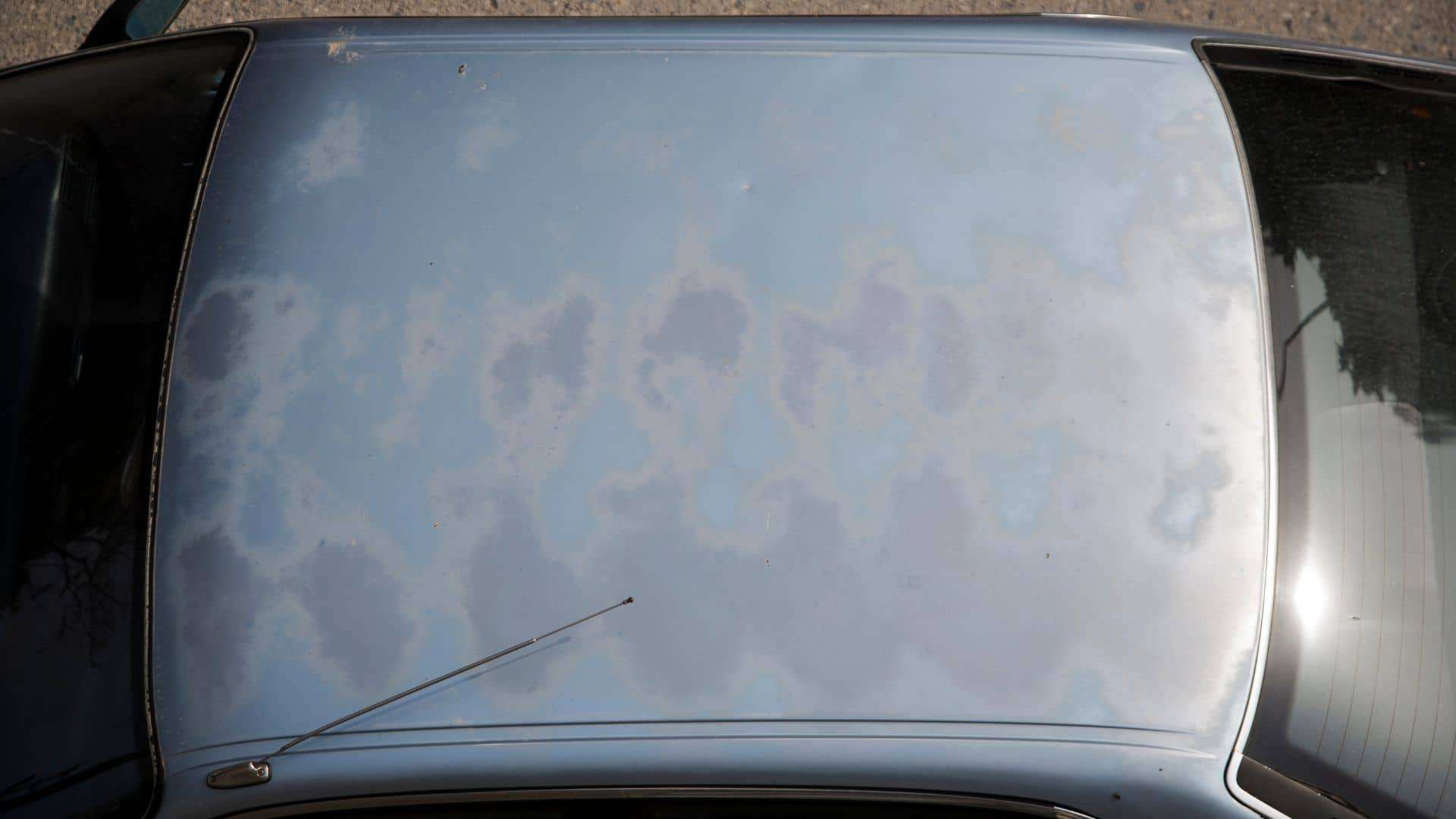The sun gives off ultraviolet rays which can alter the look of paint on your car. Read on to find out how to repair sun-damaged car paint.
3 Steps to Repair Sun-Damaged Car Paint
Supplies needed
- Car polishing compound
- Polish
- Waxing agent
- Clean towels
- Source of high-pressure washer
- Sponge
- Car soap
Step 1 : Preparation and cleaning the surface of your car
Examine The Paint For The Presence Of A Clear Finish: Note that you may find it hard to repair and restore the look of your sun-damaged paint if the thin final finish has already come off. If the color has started contracting and detaching from the metal surface, it will help paint afresh.
Find A Well-Spaced Place For Your Project: Be sure to pick an area where there’s a free flow of air. You don’t want to damage your breathing system while restoring the look of your ride.
Use A Motor Washing Soap To Clean Your Car: Be sure to use high-pressure water to clear off any debris and unwanted particles from the surface of your vehicle.
Rinsing And Drying: As was stated before, use high-pressure water to rinse the surface of your car. You want to do a complete restoration of your sun-damaged paint, so be sure to remove unwanted substances that might interfere with your restoration exercise.
After flashing all dirt, allow your car a sufficient amount of drying time before moving on to the next phase.
Use A Suitable Rubbing Material To Remove Stubborn Stains And Spots: In the process of cleaning, you might find it hard to get rid of particular areas; in that case, consider using an appropriate scrubber to clear the spots and other stains.
Step 2: Smoothing And Polishing The Surface
Wear Suitable Protective Gear: The repair process involves the emission of harmful fumes. Additionally, the substance used to polish the surface of your car may be corrosive if it comes in contact with bare skin. On that note, ensure you are adequately shielded.
Put Your Polishing Agent On The Sun Damaged Paint Your: Spread the polishing compound around the area you are working. Be sure to squeeze and rub the substance until it blends into the sun-damaged paint. Continue applying your polishing substance until you cover all the damaged parts.
Work Your Way Around The Surface To Remove The Sun-Damaged Paint: Be sure to polish the surface of your car using a clean towel. Ensure that you have wiped all the sections where you applied your polishing agent. By now, you should start noticing a distinctive shine on the surface of your car.
Add More Of Your Polishing Substance: Because you want a clean and professional finish, it might help you add more of the polishing agent onto the surface of your vehicle. Be sure to emphasize your application on the most affected parts.
Clean The Polishing Substance: Wipe off any excess polish from the surface of your car using a clean piece of cloth. Be sure to wipe the leftover residue from all over the surface of your vehicle.
You may notice that, after polishing the sun-damaged paint, some parts are still showing fading marks; in that case, consider applying pints of color to the affected areas for a consistent and even finish.
Step 3: Shielding the Finish against environmental conditions
At this point, it is advisable to use a suitable waxing substance on the surface of your restored parts. Wax shields the paint from scratches and harsh environmental conditions. Consider taping off areas you do not intend to wax with an appropriate covering material because the wax can alter the color of certain parts.
Park Your Car Under A Shade: Try as much as possible to shield your finished project from direct sunlight. Cultivate the habit of parking your vehicle under a shade. Consider using appropriate coverage and maintain a regular wash.
Wash The Car Regularly: The most effective way to protect your car paint and ensure it lasts longer is to develop a habit of washing your car regularly. Leaving dirt to accumulate on the surface of your car will contribute to the peeling of paint.
Be sure to adopt a proper way to clean dirt from your vehicle because if you leave dirt to sit on your car for a while, it may contribute to the corrosion of paint on your vehicle.
Tips To Note While Repairing Sun Damaged Paint
- You might consider repainting your car if the polishing won’t work. Note that you might notice patches of faded areas after polishing your vehicle, which indicates the polish has not worked.
- If you are unsure how to restore and repair your undamaged paint, consider hiring a professional to retouch your car.
- Consider doing a complete painting on your car if the paint damage is beyond repair.
Use a high-pressure water source to enable you to remove stubborn dirt on the surface of your car paint. Note that you can use other methods of your choice to clean the surface of your car. - Allow your car to dry properly before applying your polishing substance.
- Wax shields the paint from scratches and harsh environmental conditions. Consider taping off areas you do not intend to wax with an appropriate covering material because the wax can alter the color of certain parts.
- Be sure to squeeze and rub the substance until it blends into the sun-damaged paint. Continue applying your polishing substance until you cover all the damaged parts.
- Be sure to wash your car correctly before applying any wax.
- Consider taping off areas you do not intend to wax with an appropriate covering material because the wax can alter the color of certain parts after flashing all dirt. Allow your car enough time to dry before you carry on with your project.






